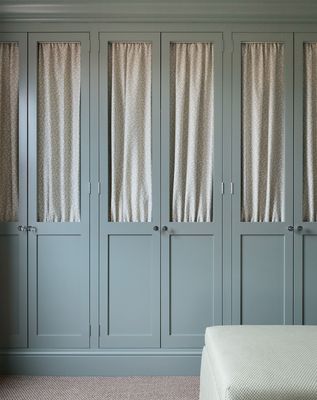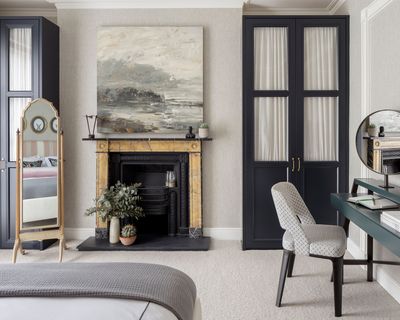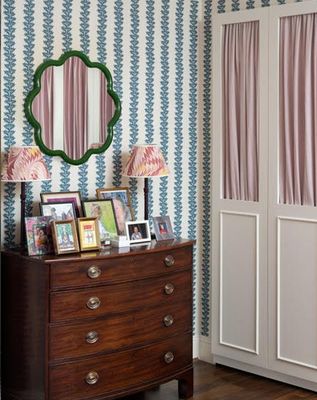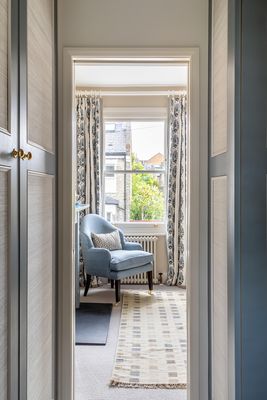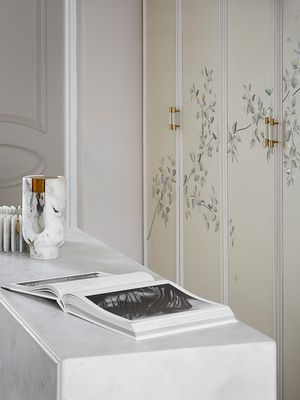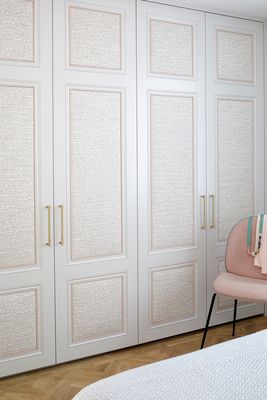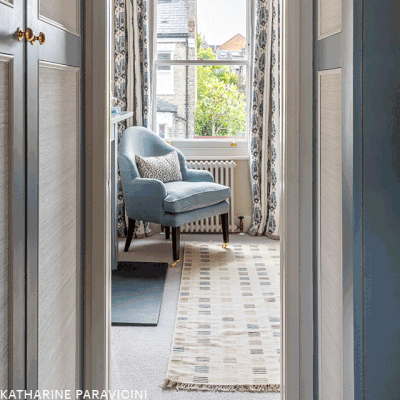
How To Add Interest To Wardrobe Doors
Unless you’re lucky enough to have a walk-in closet, a wardrobe is the one piece of furniture your bedroom almost certainly has. If it’s built in, there are a couple of simple options available to you when it comes to deciding what to do with the doors.
One of the simplest approaches interior designers take when making a feature of wardrobe doors is to create a panelled section and fill it either with fabric or wallpaper. To do this, you need to divide the door into panels – usually into halves or thirds – and make a feature of the topmost section. To use wallpaper, simply paper the door, but if you want to use fabric, you will need to cut out and remove the panel before attaching the fabric behind it.
HOW TO PLAN THE DOOR
Interior designer Laura Stephens says…
Proportion-wise, always divide the wardrobe door into thirds. Use the top two thirds of the door to feature the first panel – so either the plain, rattan or glazed panel, depending the effect you’re going for – and the bottom third for the next panel.
If you want the wardrobe to ‘disappear’ into the walls, keep the doors and the panels plain and painted. And always ensure the same paint colour is used as that on the walls. With fabric, glaze the top longer panel and put pleated fabric behind it. Keep the bottom panel painted to avoid too much reflection. If you’re keen to use rattan, always use it across both panels.
Visit LauraStephens.co.uk
HOW TO USE FABRIC
Interior designer Jessica Buckley says…
Ruched curtain panels look stunning on wardrobe doors. We’ve done projects using fabric panels without glass, which makes for an inexpensive makeover. Simply have your curtain maker run up the fabric panels, and ruche top and bottom on a slim lightweight pole or wire. Glazing is very smart, too, and protects the fabric from dust and dirt.
Just remember to use a reasonably thin fabric. This way, it can be easily ruched unlike chunkier fabrics which don’t gather so well. Plain colours (perhaps in a contrasting colour to the paint on the wardrobe doors) or smaller patterns look great. Be careful with larger, bolder patterns as these might look distorted once gathered. Ruching the fabric looks softer and much more interesting than flat panels of fabric, too.
Visit JessicaBuckley.co.uk
HOW TO USE WALLPAPER
Noor Charchafchi of Celine Interior Design says…
Using wallpaper without a repeat design can be more expensive. For a more textural effect, choose something that doesn’t feel like a wallpaper at all – such as grass cloth.
Note the measurements of the wallpaper so they match the panels. Standard wallpaper rolls are 10m in length by 53cm in width, but there are so many variations nowadays, so it’s important to check first.
Get a large sample before making your final decision. Lots of suppliers provide A4 sized samples or a little larger. You can also buy one roll of wallpaper to start with, especially if it’s reasonably priced. Just be aware that patterns on A4 can look magnified, and once you have a larger piece, the design can suddenly appear much smaller – so do try and see a larger piece or even a whole drop before moving ahead.
Think about the type of frame you plan to use. After all, it might affect the look of your chosen design. Go for a really slim frame when it’s a very special wallpaper like a chinoiserie, so it doesn’t feel too forced and overwhelming.
Visit CelineInteriorDesign.com
INSPIRATION CREDITS: Katharine Paravicini; Jessica Buckley; Celine Interior Design
DISCLAIMER: We endeavour to always credit the correct original source of every image we use. If you think a credit may be incorrect, please contact us at info@sheerluxe.com.
